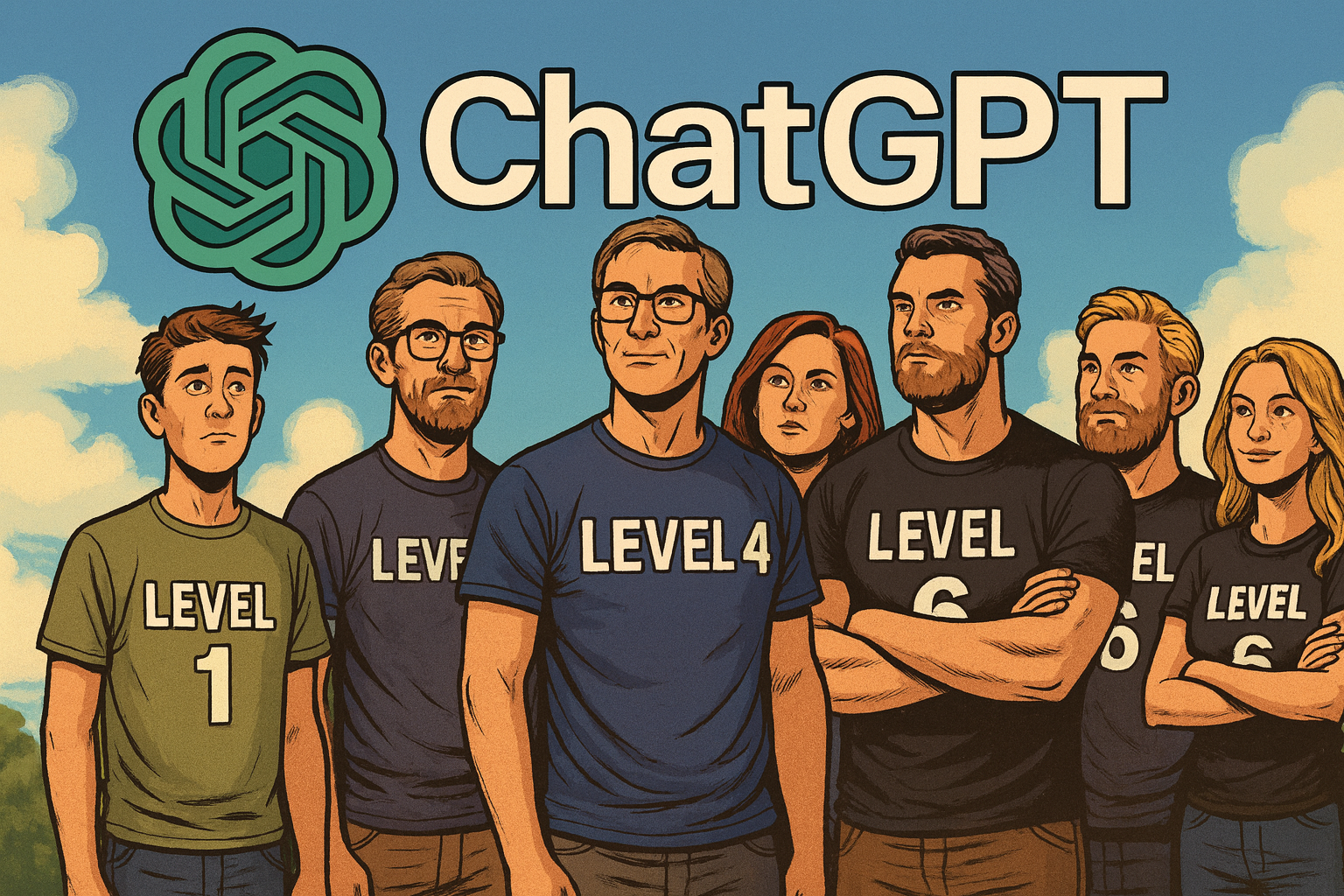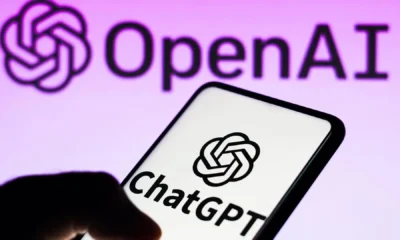AI Model
GPT‑5.1 Spotted: OpenAI’s Quiet Leap Toward Smarter AI Reasoning

- Share
- Tweet /data/web/virtuals/375883/virtual/www/domains/spaisee.com/wp-content/plugins/mvp-social-buttons/mvp-social-buttons.php on line 63
https://spaisee.com/wp-content/uploads/2025/11/chatgpt-51-1000x600.png&description=GPT‑5.1 Spotted: OpenAI’s Quiet Leap Toward Smarter AI Reasoning', 'pinterestShare', 'width=750,height=350'); return false;" title="Pin This Post">
Whispers of a new AI model have begun circulating through developer channels and backend dashboards, and it appears OpenAI is preparing to release a stealth update: GPT‑5.1. While the company has not made any public announcement, a growing trail of breadcrumbs—including internal model identifiers, performance metrics, and early access user comments—suggests that a more advanced version of GPT‑5 is already in private testing. If the timeline holds, GPT‑5.1 could emerge before the end of November 2025, bringing with it a major shift in reasoning power, memory depth, and enterprise readiness.
What’s in GPT‑5.1: Signs of a smarter engine
According to developer telemetry and third‑party infrastructure tools like OpenRouter, references to a “gpt‑5‑1‑thinking” model have surfaced across relay traffic. These designations hint at a distinct configuration under the GPT‑5 family, optimized not for speed or multimodality, but for deep cognitive tasks—multi‑step reasoning, instruction‑following, and long‑term memory.
Unofficial sources, including a handful of plugged‑in beta testers, have begun to characterize GPT‑5.1 as an “Alpha Polaris” release. This version reportedly supports context windows as large as 256,000 tokens, making it more capable of handling entire books, legal contracts, or deeply nested programming logic in a single prompt cycle. Users describe the reasoning as “far less error‑prone,” particularly in code generation and chain‑of‑thought workflows. Unlike earlier iterations which often hallucinated under logic pressure, GPT‑5.1 appears tuned for clarity and traceability in how it reaches conclusions.
This isn’t just an incremental bump. Feedback from early enterprise users suggests the model is more deterministic in following instructions across long threads and better at remembering prior dialogue turns, even in expansive documents or nested tasks. This could fundamentally shift how AI is used in research, legal tech, and regulated business environments.
Why OpenAI may be doing this now
Strategically, the move aligns with a broader trend in the AI arms race. Google’s Gemini 3 Pro and Meta’s rumored models are prioritizing breadth—more modalities, massive context, and orchestration. OpenAI’s GPT‑5.1, in contrast, appears to double down on depth of reasoning, aiming to be not just bigger, but better at thinking. That means more accurate instructions, fewer logic collapses in code, and enhanced reliability for real‑world decision support.
There’s also pressure from the business side. Enterprises are demanding more robust AI for customer support, document processing, and internal analytics. A model that can maintain focus across hundreds of pages—or deliver consistent answers without needing frequent re‑prompting—solves both cost and performance pain points. In that context, GPT‑5.1 is less about flashy demos and more about serious deployment.
What GPT‑5.1 could change
The implications are wide. A model with 256k context and improved instruction adherence could dominate use cases like technical documentation parsing, full‑stack code analysis, multi‑document summarization, or even complex RFP writing. Instead of breaking prompts into fragments, teams can feed large bodies of content into a single prompt and receive reasoned, coherent output.
It could also reshape the economics of AI development. If GPT‑5.1 reduces the number of queries required to get a correct answer, then time‑to‑insight drops and infrastructure costs shrink—especially at scale. For developers building on top of OpenAI’s API, this means new design paradigms for tools: fewer guardrails, deeper interactions, and a focus on persistent reasoning rather than one‑shot queries.
What to watch in the coming weeks
Based on leaked timelines and community tracking, the release may follow a tiered rollout. Standard GPT‑5.1 could launch to API partners or ChatGPT Pro users first, with specialized variants—potentially branded “Pro” or “Reasoning”—coming later. These versions may include even larger context, low‑latency modes, or fine‑tuned configurations for specific verticals like finance, health, or software development.
User feedback will be critical in validating whether the model actually delivers on its promise of deeper logic and fewer errors. Expect close scrutiny of how GPT‑5.1 handles long‑document workflows, whether its memory is persistent or session‑bound, and how it balances reasoning power with cost per token.
Additionally, the industry response will be telling. If GPT‑5.1 sets a new bar for enterprise AI reliability, rivals like Claude, Gemini, and Mistral will need to recalibrate—not just on flashy features, but on reasoning robustness. In a world increasingly dependent on AI for decision‑making, trust and precision are becoming the ultimate currency.
Conclusion
While GPT‑5.1 has yet to be confirmed by OpenAI, the signs are unmistakable: a significant new model is already live behind the scenes. With a focus on reasoning, expanded context, and tighter instruction fidelity, this could be the most useful foundation model yet for enterprise and professional users.
As the hype over “general AI” cools into more grounded expectations, GPT‑5.1 may represent a mature evolution—one less about spectacle and more about utility. If the early signals are correct, the real AI breakthrough of 2025 might not be about who can generate the best image or video, but who can think clearly, at scale, and with purpose.
AI Model
GPT-6 and the Rise of Agentic AI: Why the Next Leap Won’t Just Be Bigger, But Smarter

The world is watching for OpenAI’s next move. After the launch of GPT-4 and the iterative advancements with GPT-4 Turbo, the question isn’t just when GPT-6 will arrive—it’s what kind of intelligence it will bring with it. While the company has officially confirmed that GPT-6 won’t debut before the end of 2025, speculation is heating up. And for good reason: GPT-6 promises to mark a qualitative shift in how AI works for us, not just with us.
A Model That Remembers, Learns, and Acts
What sets GPT-6 apart from its predecessors won’t just be the scale—though rumors suggest trillions of parameters and training on quadrillions of tokens—but its evolving architecture of utility. If GPT-4 stunned the world with its ability to reason across modalities, GPT-6 is poised to demonstrate something far more personal: memory.
Imagine an AI that doesn’t start from zero each time you open a chat. Instead, it recalls your preferences, your professional style, your past projects. This persistent memory would radically reduce friction in everyday interactions. Developers won’t have to re-explain their stack. Analysts won’t need to remind the AI of their data schema. The model becomes more than a tool—it becomes a teammate.
OpenAI has already introduced rudimentary memory features in ChatGPT, allowing the assistant to remember user names and stylistic preferences. GPT-6 is expected to take that further with long-term context retention, enabling seamless continuity across sessions. This would unlock a wave of possibilities for productivity and personalization.
From Answer Machine to Autonomous Agent
Another defining element of GPT-6 could be its shift toward what many in the AI community are calling “agentic behavior.” Instead of responding passively to prompts, GPT-6 may proactively plan, reason, and execute multi-step tasks.
Picture this: You ask GPT-6 to compile market research, write a summary, draft a report, and email it to your team. The model, equipped with memory and plugin capabilities, might autonomously retrieve data, synthesize findings, format a report, and use APIs to handle communications—all in one chain of action.
This vision isn’t just hype. Companies like Voiceflow and reports from developers close to the ecosystem suggest that the future of LLMs is less about isolated Q&A and more about continuous collaboration. If realized, GPT-6 would push AI closer to the role of autonomous digital assistant than any model before it.
Privacy, Power, and the Ethical Cliff
Of course, more intelligence means more responsibility—and more risk. Persistent memory raises crucial concerns about data retention, user consent, and ethical usage. Who owns the data the AI remembers? How is it stored, and can it be deleted or audited?
Adding agentic behavior compounds these issues. An AI that takes autonomous action isn’t just a tool—it’s a system with potential consequences. If it schedules meetings, makes purchases, or interacts with APIs on your behalf, safeguards must be in place to ensure accuracy, trust, and control.
This is why governance is expected to be a central narrative as GPT-6 approaches. Beyond the technical challenge of building smarter models lies the societal task of regulating them. Transparency in AI behavior, bias auditing, memory management, and user control will need to be baked into any deployment strategy.
Waiting for the Spark
Although OpenAI has confirmed GPT-6 won’t appear before 2026, the company’s actions in the interim offer clues. Massive GPU purchases, new supercomputing infrastructure, and quiet recruitment drives suggest that the next model is already in deep development. But expectations are tempered. Rather than trying to wow the public with sheer size, OpenAI seems intent on making GPT-6 meaningfully useful.
For developers, enterprises, and AI adopters, the best move now is strategic preparation. Think beyond single-session prompts. Design workflows that could benefit from memory continuity. Imagine how your tools might evolve if the AI you’re using could think ahead, not just respond. GPT-6 won’t just raise the ceiling of capability; it will expand the floor of what AI can handle autonomously.
The Bottom Line
GPT-6 won’t just be another leap in model size or benchmark scores. It represents a philosophical pivot in artificial intelligence: from static interaction to dynamic partnership. When it arrives, AI won’t just be more powerful—it’ll be more present, more persistent, and perhaps more indispensable than ever before.
AI Model
How to Get Factual Accuracy from AI — And Stop It from “Hallucinating”

Everyone wants an AI that tells the truth. But the reality is — not all AI outputs are created equal. Whether you’re using ChatGPT, Claude, or Gemini, the precision of your answers depends far more on how you ask than what you ask. After months of testing, here’s a simple “six-level scale” that shows what separates a mediocre chatbot from a research-grade reasoning engine.
Level 1 — The Basic Chat
The weakest results come from doing the simplest thing: just asking.
By default, ChatGPT uses its Instant or fast-response mode — quick, but not very precise. It generates plausible text rather than verified facts. Great for brainstorming, terrible for truth.
Level 2 — The Role-Play Upgrade
Results improve dramatically if you use the “role play” trick. Start your prompt with something like:
“You are an expert in… and a Harvard professor…”
Studies confirm this framing effect boosts factual recall and reasoning accuracy. You’re not changing the model’s knowledge — just focusing its reasoning style and tone.
Level 3 — Connect to the Internet
Want better accuracy? Turn on web access.
Without it, AI relies on training data that might be months (or years) old.
With browsing enabled, it can pull current information and cross-check claims. This simple switch often cuts hallucination rates in half.
Level 4 — Use a Reasoning Model
This is where things get serious.
ChatGPT’s Thinking or Reasoning mode takes longer to respond, but its answers rival graduate-level logic. These models don’t just autocomplete text — they reason step by step before producing a response. Expect slower replies but vastly better reliability.
Level 5 — The Power Combo
For most advanced users, this is the sweet spot:
combine role play (2) + web access (3) + reasoning mode (4).
This stack produces nuanced, sourced, and deeply logical answers — what most people call “AI that finally makes sense.”
Level 6 — Deep Research Mode
This is the top tier.
Activate agent-based deep research, and the AI doesn’t just answer — it works. For 20–30 minutes, it collects, verifies, and synthesizes information into a report that can run 10–15 pages, complete with citations.
It’s the closest thing to a true digital researcher available today.
Is It Perfect?
Still no — and maybe never will be.
If Level 1 feels like getting an answer from a student doing their best guess, then Level 4 behaves like a well-trained expert, and Level 6 performs like a full research team verifying every claim. Each step adds rigor, depth, and fewer mistakes — at the cost of more time.
The Real Takeaway
When people say “AI is dumb,” they’re usually stuck at Level 1.
Use the higher-order modes — especially Levels 5 and 6 — and you’ll see something different: an AI that reasons, cites, and argues with near-academic depth.
If truth matters, don’t just ask AI — teach it how to think.
AI Model
81% Wrong: How AI Chatbots Are Rewriting the News With Confident Lies

In 2025, millions rely on AI chatbots for breaking news and current affairs. Yet new independent research shows these tools frequently distort the facts. A European Broadcasting Union (EBU) and BBC–supported study found that 45% of AI-generated news answers contained significant errors, and 81% had at least one factual or contextual mistake. Google’s Gemini performed the worst, with sourcing errors in roughly 72% of its responses. The finding underscores a growing concern: the more fluent these systems become, the harder it is to spot when they’re wrong.
Hallucination by Design
The errors aren’t random; they stem from how language models are built. Chatbots don’t “know” facts—they generate text statistically consistent with their training data. When data is missing or ambiguous, they hallucinate—creating confident but unverified information.
Researchers from Reuters, the Guardian, and academic labs note that models optimized for plausibility will always risk misleading users when asked about evolving or factual topics.
This pattern isn’t new. In healthcare tests, large models fabricated medical citations from real journals, while political misinformation studies show chatbots can repeat seeded propaganda from online data.
Why Chatbots “Lie”
AI systems don’t lie intentionally. They lack intent. But their architecture guarantees output that looks right even when it isn’t. Major causes include:
- Ungrounded generation: Most models generate text from patterns rather than verified data.
- Outdated or biased training sets: Many systems draw from pre-2024 web archives.
- Optimization for fluency over accuracy: Smooth answers rank higher than hesitant ones.
- Data poisoning: Malicious actors can seed misleading information into web sources used for training.
As one AI researcher summarized: “They don’t lie like people do—they just don’t know when they’re wrong.”
Real-World Consequences
- Public trust erosion: Users exposed to polished but false summaries begin doubting all media, not just the AI.
- Amplified misinformation: Wrong answers are often screenshot, shared, and repeated without correction.
- Sector-specific risks: In medicine, law, or finance, fabricated details can cause real-world damage. Legal cases have already cited AI-invented precedents.
- Manipulation threat: Adversarial groups can fine-tune open models to deliver targeted disinformation at scale.
How Big Is the Problem?
While accuracy metrics are worrying, impact on audiences remains under study. Some researchers argue the fears are overstated—many users still cross-check facts. Yet the speed and confidence of AI answers make misinformation harder to detect. In social feeds, the distinction between AI-generated summaries and verified reporting often vanishes within minutes.
What Should Change
- Transparency: Developers should disclose when responses draw from AI rather than direct source retrieval.
- Grounding & citations: Chatbots need verified databases and timestamped links, not “estimated” facts.
- User literacy: Treat AI summaries like unverified tips—always confirm with original outlets.
- Regulation: Oversight may be necessary to prevent automated systems from impersonating legitimate news.
The Bottom Line
The 81% error rate is not an isolated glitch—it’s a structural outcome of how generative AI works today. Chatbots are optimized for fluency, not truth. Until grounding and retrieval improve, AI remains a capable assistant but an unreliable journalist.
For now, think of your chatbot as a junior reporter with infinite confidence and no editor.
-

 AI Model1 month ago
AI Model1 month agoHow to Use Sora 2: The Complete Guide to Text‑to‑Video Magic
-

 AI Model3 months ago
AI Model3 months agoTutorial: How to Enable and Use ChatGPT’s New Agent Functionality and Create Reusable Prompts
-

 AI Model5 months ago
AI Model5 months agoComplete Guide to AI Image Generation Using DALL·E 3
-

 AI Model5 months ago
AI Model5 months agoMastering Visual Storytelling with DALL·E 3: A Professional Guide to Advanced Image Generation
-

 AI Model3 months ago
AI Model3 months agoTutorial: Mastering Painting Images with Grok Imagine
-

 News2 months ago
News2 months agoOpenAI’s Bold Bet: A TikTok‑Style App with Sora 2 at Its Core
-

 News4 months ago
News4 months agoAnthropic Tightens Claude Code Usage Limits Without Warning
-

 News1 month ago
News1 month agoGoogle’s CodeMender: The AI Agent That Writes Its Own Security Patches










